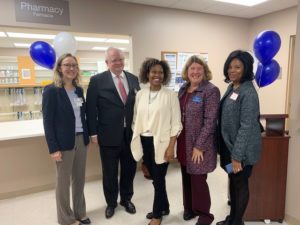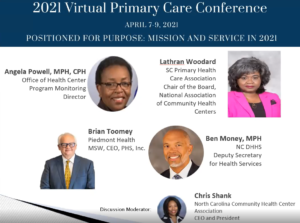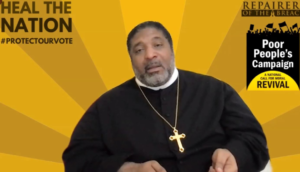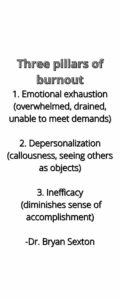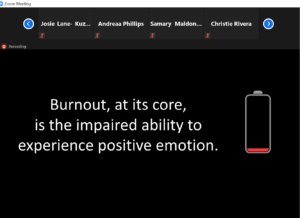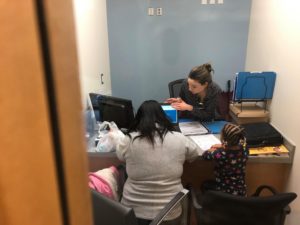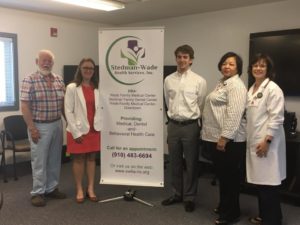Alvine Kapitako
In late 2019, the novel coronavirus (Sars coronavirus 2) started to gradually spread from Wuhan, China to the rest of the world. Before we knew it, the world was locked up and a global pandemic declared as more and more people were infected with the deadly virus every second of the day. The numbers of those who died were equally devastating. Slowly but surely every corner of the world felt the impact of this dreadful disease. With a number of vaccines in sight now, scientists and public health professionals are hopeful that life will eventually get back to normal with fewer hospitalizations and deaths, as a result. But, what did the pandemic teach us about humanity? Resilience? Yes, certainly. Telehealth, sometimes called telemedicine was definitely one of the lessons. During the pandemic, telehealth whether at Community Health Centers (CHCs) or hospitals was seen as an alternative to in-person health care service provision-all in an effort to curb the then ravaging pandemic.
Telehealth is defined as “the use of electronic information and telecommunication technologies to provide care when a patient and doctor are not in the same place at the same time”. Now that life is slowly getting back to normal, one of the biggest questions perhaps on everyone’s lips is whether telehealth will receive the same attention it did post COVID-19 pandemic.
Before the pandemic, there weren’t many providers using telehealth, said Dr. Eugenie Komives, a family physician who is also affiliated with the Wellcare Health Plan. Before the pandemic, Komives was exposed to telehealth but nothing compared to how much they used it when COVID hit. During the pandemic, the manner in which providers and patients viewed telehealth changed, primarily because of the need to provide services through telehealth to avoid possibly spreading the virus.
“I think we’ve learned that you’re able to provide safe care for a large number of conditions to patients who are either high risk or come into an office during a pandemic just having difficulty whether they’re literally afraid to come in and in doing so I think we’ve crossed over that digital divide around the use of telehealth and virtual healthcare and really looking forward to seeing how this continues to play out,” said Komives during a panel discussion of the North Carolina Community Health Center Association (NCCHCA)’s virtual Primary Care Conference in April 2021.
CHCs had to adapt to prevent the spread of COVID-19 within their settings. Changing the look of patient-provider interactions by modifying physical spaces, moving some appointments to telehealth and training staff and patients to use tele-devices are some of the changes CHCs had to implement, said Margaret Covington, the CEO of Stedman-Wade Health Services.
“The initial impression I had for telemedicine is that it’s a very underutilized tool for physician practices, said Dr. Michael Ogden of Healthy Blue NC. He said the uptake of telehealth was not immediate and before the COVID-19 pandemic “I felt like we were practicing fax machine medicine in the iPhone era”.
Also sharing his experience with the use of telehealth, Dr. George Cheely of the AmeriHealth Caritas insurance plan in North Carolina said that before the pandemic, there was potential for telehealth. However, it was viewed more as a modality that was often focused on night and weekend adjunct urgent care delivery often for people who could not afford to pay out of pocket for the services.
“I got a glimpse of positive and hopeful experiences working with neurology colleagues at Duke to help them expand their telestroke programs. It really gave me insight into how access to constrained services. Some specialists could really be expanded statewide to deliver high quality care for stroke patients and I think that the pandemic has really built on that concept of expanding access,” he said.
Telehealth is now seen as a tool to break down barriers to access where people might have to drive to primary care more easily. “People who are working shifts can step out on lunch and get their visit instead of missing work to get to visit a doctor,” said Dr. Cheely. Behavioral health, in particular, proved to be effective with telehealth, noted Dr. Cheely. “I think we’ve also really seen that where behavioral health providers may have had a 20 or 30 percent no show rate pre-telehealth with the deployment of telehealth those have dropped to almost 0. Telehealth is an important way to augment access, provided it’s coordinated closely with primary care,” said Dr. Cheely.
But, as we know, telehealth is not entirely new. It has been around much longer than we probably had a formal definition of it. Dr. Michelle Bucknar of United Health Care shared her initial experience with telehealth. “My first experience with telehealth was actually in the mid to late 90s”, she told the panel. She had just finished her medical residency and moved to Kansas City. “The University of Kansas actually had school-based telehealth…” she related. Being “old school”, the idea of attending to patients without seeing them was not her idea of practicing pediatrics.
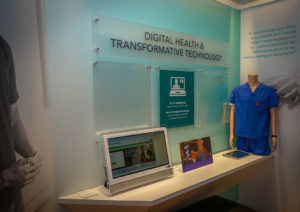
Looking at the use of telehealth beyond COVID-19.
“I really wasn’t in favor of the school-based telehealth clinics but at that time, I was also working at a pediatrics academic center that was mostly evolving into a telehealth program and by the time I moved to North Carolina they had a robust telehealth program predominantly the specialty visits,” she related. This early experience was very helpful during the pandemic, she notes. “I feel like I’ve come full circle and I embrace telehealth. I think the important thing is to not disrupt that primary care relationship. Even though I’ve come a long way, I want to preserve that primary care relationship and because of that I really want primary care to offer these services and I think COVID has really pushed us forward. While COVID is just awful and has really disrupted our lives, I think there are some good that’s going to come out of that and I hope telehealth is one of those,” said Dr. Cheely.
The future of telehealth
Dr. Ogden believes that telehealth is an underused adjunct to a face-to-face relationship of providing healthcare. “The balance of using that platform to be an augmenting factor in that relationship is really where I see the future of telemedicine being in North Carolina and beyond. I do think telemedicine is an important modality and from a [Blue Cross Blue Shield North Carolina’s Medicaid Insurance Program] Healthy Blue perspective we would want to preserve that modality of access as an adjunct and not a replacement for the primary care relationship,” said Dr. Ogden.
While telehealth has proved effective during the pandemic, concerns raised during the panel discussion are the challenges of access and affordability. For example, not everyone owns a cellphone or broadband connection in America, which can make video telehealth visits harder if not impossible to accomplish.
“Anything we can do to lower the barriers to having that access will be a big advantage as long as it results and benefits to the patient,” said Dr.Ogden. Additionally, confidentiality and protecting patient information is important, noted Dr. Ogden. Looking at the future of telehealth would also require being clear on what is not telehealth, said Dr. Ogden. “Telephone only consultations as a definition of telemedicine probably ought to be softened a little bit. I don’t think it’s the same thing as a telehealth visit unfortunately and right now it’s covered at a certain percentage but that’s one of those things that we feel is probably not the same thing and shouldn’t be covered at the same rate as a telehealth visit,” Dr. Ogden said. Another challenge is finding ways to prevent financial exploitation of telehealth claims, the panelists noted.
“To prevent fraud we would need to watch the data over time and ensure that when we see deviations from the norm we ask the questions rather than make assumptions,” Dr. Ogden said. Blue Cross and Blue Shield of North Carolina announced in April that it would keep its pandemic telehealth policies through 2021. The use of telehealth by Blue Cross’ 3.9 million members grew by more than 7,500 in 2020, according to a report published by The News & Observer. Read more about it here: https://www.newsobserver.com/news/local/article251718023.html.


